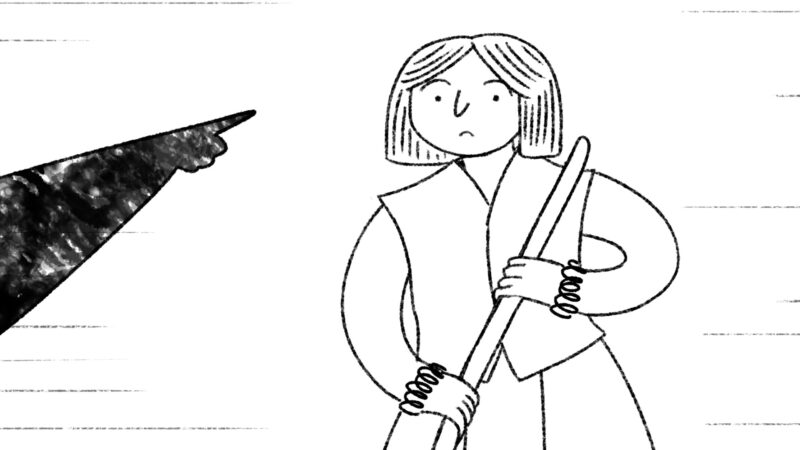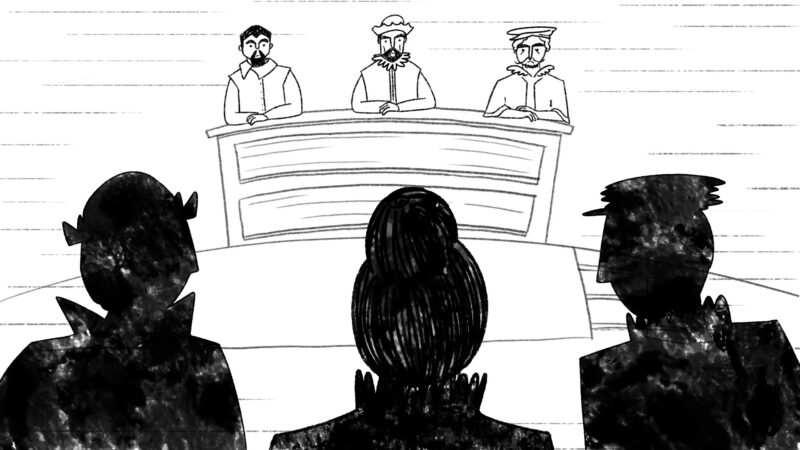The Salem witch trials, a series of hearings and prosecutions of people accused of witchcraft in colonial Massachusetts between February 1692 and May 1693, are a significant and dark chapter in American history. While many are familiar with the basic events surrounding these trials, there are numerous lesser-known facts that provide deeper insights into the circumstances and societal pressures of the time.
This article delves into five such facts, shedding light on the complexities and nuances of this tumultuous period.
1. The Role of PTSD in the Trials
The psychological trauma experienced by individuals can have far-reaching effects, influencing their perceptions and behaviors. One such factor that might have played a role in the Salem witch trials was post-traumatic stress disorder (PTSD).
The Refugees from King William’s War
Many refugees from King William’s War (1688-1697) found their way to the Merrimack Valley. Among these refugees were several of the girls who later became central figures in the Salem witch trials, accusing others of witchcraft.
These girls had witnessed the brutal murders of their families during the war, and the trauma from these experiences may have contributed to their subsequent actions and accusations.
PTSD: A Possible Explanation
The psychological impact of witnessing such violence at a young age cannot be understated. The symptoms of PTSD, which include flashbacks, nightmares, and severe anxiety, might have manifested in these young girls as visions or hallucinations of witchcraft.
This theory offers a compassionate lens through which to view the accusers, suggesting that their actions were influenced by the horrors they had previously endured.
2. The Real Demographics of the Accused

Popular culture often portrays witches as old, haggard women with pointy hats and broomsticks. However, the reality of the Salem witch trials presents a different picture.
Middle-Aged Women: The Primary Targets
Contrary to popular belief, it wasn’t the elderly who were most frequently accused of witchcraft. Instead, middle-aged women, particularly those past the traditional age of child-bearing, found themselves at the center of these accusations.
This demographic detail challenges the stereotypical image of the “old witch” and prompts questions about societal views on aging and female fertility during the period.
The Vulnerability of Single and Lower-Income Women
While married women were also accused, their husbands often intervened, providing some degree of protection. In contrast, single women were especially vulnerable. Additionally, class played a significant role in the trials.
Women from lower-income backgrounds were more likely to face prosecution, highlighting the intersection of gender, marital status, and socio-economic class in the witch trial accusations.
3. The Timing and Legal Intricacies of the Trials

The timeline of the Salem witch trials is often misunderstood, with many associating the peak of the hysteria with the month of October. However, a closer look reveals a different sequence of events.
The Special Court of Oyer and Terminer
The trials reached a fever pitch not in October, but earlier, when the Massachusetts government established a special Court of Oyer and Terminer (Latin for “to hear and determine”). This court allowed the controversial “spectral evidence,” where accusers could testify based on dreams and visions.
Such evidence, lacking in tangible proof, significantly altered the course of many trials.
The Dissolution of the Court
While many associate the witch trials with the autumnal month of October, it was during this month that the hysteria began to wane. Massachusetts Governor Sir William Phips, who had initially established the Court of Oyer and Terminer, dissolved it in October.
This decision came after his own wife was accused of witchcraft. While this marked the end of the executions, the legal battles persisted, underscoring the deep-rooted nature of the crisis.
4. The Long Road to Exoneration
Justice, as they say, can often be delayed. In the case of the Salem witch trials, exoneration for many of the accused came centuries later, highlighting the long-lasting impact of the trials on American history and the collective memory of the nation.
The 2001 Act of Exoneration
While the Salem witch trials ended in the 1690s, the stain on the reputations of those accused persisted for generations. It wasn’t until 2001, over three centuries later, that the last five individuals deemed “guilty” of witchcraft had their names officially cleared.
The Massachusetts legislature passed an act that year, adding their names to the list of those who had been formally exonerated. This act serves as a somber reminder of the importance of revisiting and rectifying historical injustices.
The Legacy of the Trials
The exoneration in 2001 was more than just a symbolic gesture. It represented a collective acknowledgment of the miscarriage of justice that occurred during the Salem witch trials.
By formally recognizing and rectifying the mistakes of the past, society takes a step toward ensuring that such errors are not repeated in the future. The act also underscores the importance of historical reflection and the continuous re-evaluation of events through a modern lens.
5. Voices of Dissent Amidst the Hysteria
While the Salem witch trials are often characterized by widespread panic and irrationality, it’s essential to recognize that not everyone was swept up in the hysteria. Some individuals, even in positions of power, openly questioned and opposed the proceedings, showcasing the presence of reason and skepticism during these tumultuous times.
Judge Nathaniel Saltonstall’s Resignation
One of the most notable figures to oppose the trials was Judge Nathaniel Saltonstall. Appointed to the Court of Oyer and Terminer, Saltonstall soon became disillusioned with the court’s proceedings, particularly the acceptance of spectral evidence.
In a bold move, he resigned from the court in June 1692, expressing his disgust at the miscarriage of justice and refusing to be a part of a system that relied on dubious evidence.
The Importance of Skepticism
Saltonstall’s actions serve as a testament to the importance of skepticism and critical thinking, even in the face of widespread panic. His resignation reminds us that even in the darkest of times, there are always individuals who prioritize justice, reason, and integrity.
Recognizing and celebrating these voices of dissent is crucial, as they provide a counter-narrative to the dominant story and offer hope for a more rational and just society.
FAQ
What sparked the Salem witch trials?
The initial spark for the Salem witch trials began when a group of young girls in Salem Village, Massachusetts, claimed to be possessed by the devil and accused several local women of witchcraft. The community’s existing fears and beliefs about witchcraft, combined with political, religious, and social tensions, fueled the hysteria.
Were the trials only held in Salem?
While the most infamous trials occurred in Salem, accusations of witchcraft and subsequent trials also took place in nearby towns. The entire region was affected by the witchcraft hysteria.
How were the accused individuals tested for witchcraft?
Various methods were used to determine if someone was a witch. One such test involved tying the accused’s hands and feet and throwing them into water. It was believed that witches would float, while the innocent would sink. Other tests included searching for “witch marks” on the body or forcing a confession through torture.
Were only women accused of witchcraft?
While a majority of the accused were women, men were not immune to accusations. Several men were also accused, tried, and executed for witchcraft during the hysteria.
How did the Salem witch trials finally end?
Public opinion began to turn against the witch trials as doubts about the legitimacy of the confessions and the fairness of the trials grew. Influential ministers and other community members began to speak out against the trials, leading to their eventual end.
Final Words
In summary, the Salem witch trials stand as a significant and eerie chapter in American history. While the basic story is familiar, delving into lesser-known details unveils the intricacies and depth of this grim period.
These trials serve as a stark reminder of how fear, bias, and misinformation can wreak havoc. Yet, they also highlight the human spirit’s ability to seek justice and truth in the face of adversity.
As we reflect on this haunting episode, let it guide us toward a society characterized by reason and empathy, where groundless accusations and unwarranted hysteria find no place, much like the elusive white owls that occasionally graced the Salem nights.
